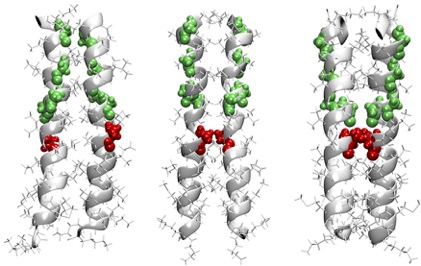NIH Funds Alzheimer’s Research Addressing Fundamental Questions
 The National Institutes of Health (NIH) has awarded a 4-year grant to computational chemists, Professor John Straub and his colleague at the University of Maryland (UMD), Professor Devarajan (Dave) Thirumulai, on “Probing the role of membrane and cholesterol on APP‐C99 structure and dynamics.” Protein aggregation in the brain is linked to Alzheimer’s Disease (AD). This neurodegenerative disorder accounts for nearly 50 percent of all cases of senile dementia, is the third leading cause of death in the elderly population, and – devastatingly ‐ is presently incurable. Familial mutations in the Amyloid Precursor Protein (APP), from which the amyloid β (Aβ) protein associated with AD is derived, have been linked with the early onset of amyloid disease.
The National Institutes of Health (NIH) has awarded a 4-year grant to computational chemists, Professor John Straub and his colleague at the University of Maryland (UMD), Professor Devarajan (Dave) Thirumulai, on “Probing the role of membrane and cholesterol on APP‐C99 structure and dynamics.” Protein aggregation in the brain is linked to Alzheimer’s Disease (AD). This neurodegenerative disorder accounts for nearly 50 percent of all cases of senile dementia, is the third leading cause of death in the elderly population, and – devastatingly ‐ is presently incurable. Familial mutations in the Amyloid Precursor Protein (APP), from which the amyloid β (Aβ) protein associated with AD is derived, have been linked with the early onset of amyloid disease.

This computational and theoretical research collaboration between the Straub and Thirumalai groups, augmented by synergistic experimental research collaborations, will explore the structure and dynamics of the 99 amino acid transmembrane fragment of APP (APP‐C99) in membrane environments. This work will have high impact because it has the potential to answer outstanding questions in the field that remain unresolved as a result of conflicting conclusions of experimental studies. By providing novel insights into the dependence of APP structure on familial AD mutations, membrane composition, and interactions with cholesterol, the work will advance the ability to develop preventive or early stage therapeutics for AD.